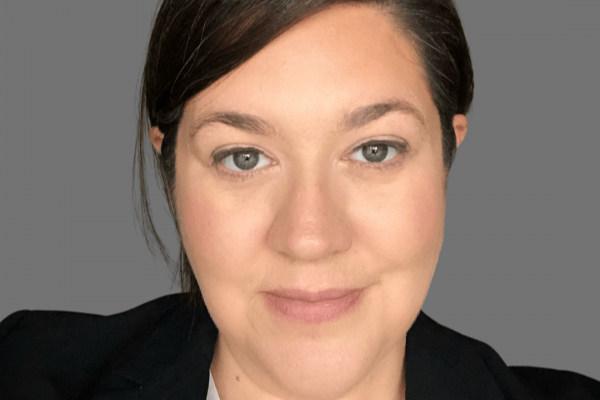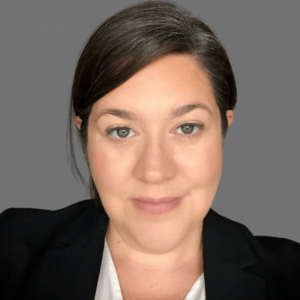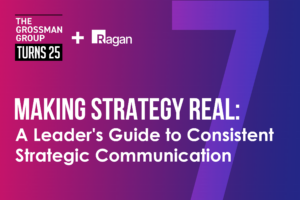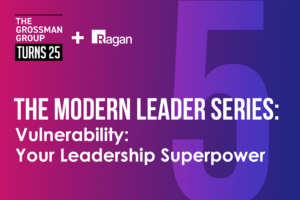Pacific Northwest National Laboratory CCO Amanda Schoch on relationship-based learning
Schoch shares lessons learned from a storied career in government ahead of her Ragan panel in Nashville next month.

Developing relationships with a learning mindset is the first step toward communicating across departments and functions, a crucial component of any integrated strategy. While comms leaders struggle to gain the foothold that gives them that omniscience and influence, a willingness to learn new skills during moments of uncertainty can tactically guide your career.
Amanda Schoch, Chief Communications Officer at Pacific Northwest National Laboratory (PNNL), understands this better than most. Initially motivated to help improve national security communications after 9/11, Schoch’s career offers tangible examples of how trusting your guiding purpose and nurturing the relationships that feel right can lead you fresh, high-stakes experiences that take your career to new heights.
Schoch shared more about her journey ahead of her keynote panel at Ragan’s Employee Experience Conference in Nashville this August.
This conversation has been edited for length and clarity.
Justin Joffe: Researching before our chat, I didn’t realize that so much of your career has been in government.
Amanda Schoch: Yeah! I’m now a government contractor (at the Pacific Northwest National Laboratory), where I work for Batelle. I’ve been government or government-adjacent my whole career.
And since right out of school, too. Moving from being a legislative assistant to an appropriations associate for the House must have been a huge responsibility to take on that early. Seems like you were informing policy across a vast amount of stakeholder sets.
AS: I worked for individual members of Congress starting with Rodney Frelinghuysen, who was my hometown congressman—he took a chance on me. I knocked on his door many, many times until he offered me an internship – which I took while working at Starbucks to cover my rent and benefits. The internship only lasted a week or so before I was offered a full-time job on Capitol Hill.
What leadership competencies did you develop during those years?
AS: I read an article once that used the term “everything is figureoutable”, and that really sums up one of

Amanda Schoch, CCO, Pacific Northwest National Laboratory
the lessons I learned working on Capitol Hill which has continued to serve me to this day. I was 22, right out of school with no real-world experience yet I was advising members of Congress on significant policy that is going to impact the nation. I had to learn how to learn an issue quickly, find the experts, and get smart on the topic fast so that I could provide the context, advice, and counsel.
Not knowing something is an opportunity to learn and grow. I think that is incredibly relevant to communicators because we’re translators for our organizations. We are rarely the subject matter expert (SME). Seeking out the SME, building trust, treating their knowledge with care and translating that information is a skill I developed early in my career.
That intake process is so important. A lot of people rush through it, which is different from doing it efficiently. You can do it efficiently and do your due diligence. But putting something off because it’s time-consuming and their list is already so vast. But research and education take time. What helped you absorb and retain that learning?
AS: People learn information in different ways. I learn best when I hear something and can have a conversation, which is why relationships are so important and not transactional to me. When approaching a new area, I find someone who knows the issue, pick up the phone, and start a conversation.
Next you move to the Office of the Director of National Intelligence (ODNI), and that seems like a big shift. Why did you get into the intelligence sector?
AS: I graduated college right before 9/11. While he was not in the World Trade Center or working there at the time, my dad spent the majority of his career in the World Trade Center. Watching the towers fall had a profound impact on me and drove me to a career in policy and national security.
I sought out national security positions on Capitol Hill to build my expertise, and I was ready for a more regular schedule that would be more conducive to starting a family, which drove me to make the jump from the legislative to the executive branch.
It seems like the next role also let you flex your chops as a strategist. Rethinking and redesigning the human capital program must have been a huge feather in your cap.
AS: It did. The program I led was created to foster integration across the intelligence community after 9/11. It required intelligence community senior staff to do a two-year tour at a different agency to foster collaboration, understanding, and networking across the community’s 17 agencies. We saw an opportunity to increase the effectiveness of the program by expanding it to junior staff, fostering that networking and collaboration earlier in a staff member’s career.
We had to work across the 17 agencies to bring that change to fruition and we had setbacks along the way. I learned that the best strategies keep the outcome as the focal point but are flexible and adaptable in how you reach that outcome.
Running that program also inspired me to take on a tour in another agency. After years of sharing the importance of the program, it was time for me to walk the walk and put myself in a place where I’m less comfortable, had to learn, and stretch myself and my skills.
Well, it seems to have paid off. In three years you go from Deputy Strategist to Chief of Communications for Operations. Is that a C-suite title? Government roles are strange.
AS: It was a wild ride going from Deputy Strategiest to Chief of Communications for Operations. I served on the team that led an agency-wide reorganization. Part of that reorganization was re-engineering NSA’s communications function in the wake of some high visibility leaks.
One of the things we learned from those leaks is the importance of communications – if an organization isn’t telling its own story it creates a vacuum for someone else to tell it for you. This created a challenge for a community and an agency that had a legacy of operating in secret.
One of the issues I focused on during that reorganization was ensuring the communications function at the NSA was positioned to tell the agency’s story in a more robust way, while still protecting sources and methods and its classified work. that led me to the opportunity to run the communications team for NSA’s Operations directorate.
And then after years of running that, you moved back to the ODNI. Why?
AS: One of my mentors and role models asked me to come back. I had been thinking about staying at NSA when the call came in. My trust and respect for her decided to return an easy one to make.
What a great example of the staying power of healthy working relationships, to your earlier point.
AS: Absolutely. I think there are those people that you so align with from a values and a mindset perspective that when they see an opportunity, you trust the opportunity is there.
One of the things I’ve trusted in my career is that saying yes to an opportunity will always open the next door. Saying no may feel safe but saying yes often leads to places you can’t yet imagine for yourself. So I’ve always played it a little bit unsafe, always leaned into where I’m a little bit uncomfortable and a little bit excited.
It paid off. A year later you became the CCO! What can you share about that transition from both a competency and a remit perspective?
AS: Well, I’ve always felt a little bit uncomfortable and often like a bit of an impostor. I finally got to a moment in my career where I realized that taking the next step is always going to be scary and that most people feel that self-doubt, but you shouldn’t let that hold you back.
I also knew I wasn’t in it alone – I had an exceptional team to rely on. So I focused on two things maintaining a strong team and setting a vision – then I trusted that team to execute.
So what changes after you hold this CCO role for three and a half years? Why did you move to PNNL?
AS: The run-up to the 2020 elections was an intense period. I found myself spending most of my time focused on crisis communication and reactionary press management. This was exacerbated by the pandemic which forced us to operate with reduced staff. Frankly, I was struggling with burnout.
Post-election I focused on helping the new leadership team get settled, and ensuring my team was in a strong position. When the Pacific Northwest National Lab reached out to me with an offer to help them leverage communications to advance the Lab’s mission and strategy, I was ready to say yes.
I’m passionate about the potential for communications to be a strategic lever in achieving business outcomes. I like to to step back, see the strategic landscape and identify where communications can bring the biggest value to an organization. PNNL offered me an opportunity to lead an incredibly talented and diverse team and lean into that strategic muscle again. lea.
You speak of that balance between being a strategist and a doer, but all comms executives sometimes still have to roll up their sleeves. Maybe it’s about having the space and time to create redundancies that help your team act at your behest, giving you an omniscience across functions. That’s not something every comms leader has.
AS: Yes, and I have an amazing team that is better at their craft than I am. I try to focus on removing barriers for them and then getting out of their way. That way I can spend time on where I bring unique value – seeing the big picture, setting the strategy and vision, connecting dots between efforts and ensuring that our communications efforts are aligned to the Lab’s strategic outcomes. deeply understand where
You’re joining a Ragan panel of fellow C-Suiters in Nashville next month to talk about solving employee disengagement. How have you thought about employee engagement in your roles?
AS: People power our institutions and organizations. As communicators, we have a critical role in engaging and inspiring our workforce as well as attracting future staff. We see ourselves as “sensemakers” – simplifying and rationalizing communications for our staff so they know what is most important and how they fit into the broader organization.
We focus on our audience – our staff – and make sure our communications are written in ways that meet them where they are. We put people front and center in our communications – people connect and trust other people, not companies – so we constantly look for ways to humanize our communications. And we track metrics to understand which communications and tactics are resonating and then leverage that insight to adapt our plans and approaches.
Amazing. Any parting wisdom to share?
AS: We have three new interns who just started this week and they asked me for one piece of advice I would give them. I said, ‘If you have the opportunity, take the leap.’ That’s always served me. I never had a long-term vision for my career. I got here by saying yes when an opportunity presented itself.
Join Houston in conversation with other C-suite leaders this August at Ragan’s Employee Experience Conference in Nashville.
Justin Joffe is the editorial director and editor-in-chief at Ragan Communications. Follow him on LinkedIn.







